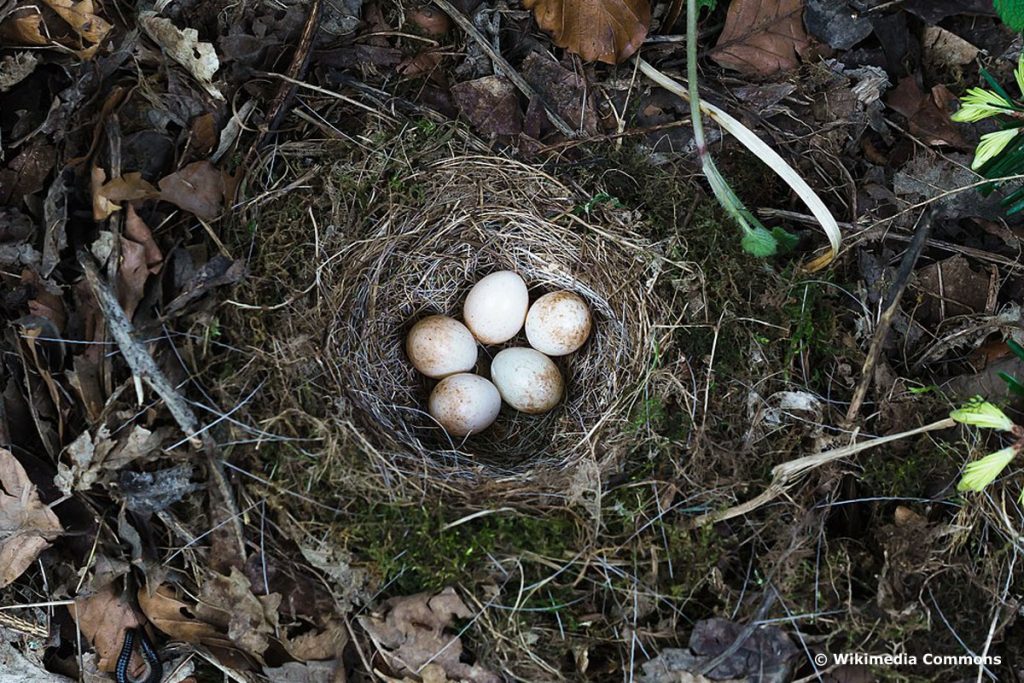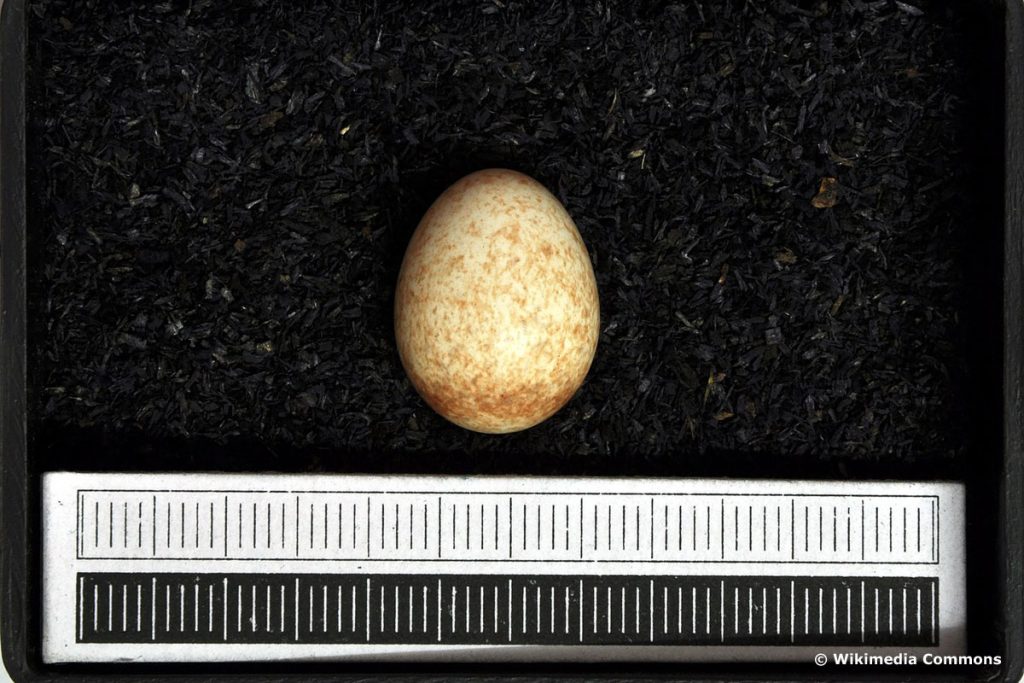The robin is an easily recognizable songbird. The red colored throat is typical. Less easy to recognize are the robin’s eggs. The most important characteristics are in this article.
- the robin is a ground-breeder
- prefers clutches in bushes, embankments or at low altitude in caves
- rarely uses nesting boxes
- eggs can hardly be confused with other bird species
Contents
Breeding season and nest
The robin pair breeds from April to July. Usually there are two broods. The female builds the nest, while the male marks the territory by singing. As building material the female uses grass, moss. Foliage and fine roots. As ground breeders, robins almost never build their nests in trees or shrubs, but for example:

- abandoned nests of other songbirds
- Cans
- Pots
- watering cans
- buckets
- shoes
Appearance of robin eggs
The clutch includes between five and seven eggs. Usually robins lay exactly six eggs. The robin egg is oval or short oval and has a matte sheen. The base color is light, usually whitish or beige, but always with some red. There are reddish-brown or rusty-red sprinkles on the shell, which become denser toward the blunt pole. Sometimes they even form a circle around the egg. The clutches of the different subspecies of the robin are similar, in particular the coloration is inherited from mothers to daughters.

Possibility of confusion
The egg size is about 20 mm in length and 16 mm in diameter. Because of these dimensions and coloring, you can hardly confuse robin eggs with other songbird eggs.
How can you support robins?
A garden that is close to nature is the best help. Hedges or bushes should consist of woody plants that have thorns and are very dense to deter predators. Also, songbirds sometimes use nest boxes with oval openings that do not hang too high.
What enemies does the robin have?
They are often predators, such as martens, cats, rats, foxes, badgers and birds of prey such as owls, sparrow hawks and buzzards. Humans are also an enemy of the songbird through habitat destruction and the use of poisons in agriculture.
What to do if you find an abandoned clutch?
The clutch should be observed for a while to find out if it is really abandoned. Usually the parents do eventually return and continue to breed when they are undisturbed.
Can robin eggs be artificially hatched?
Theoretically, this would be possible with a suitable incubator, but it is seldom successful for non-professionals without background knowledge.

